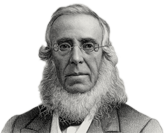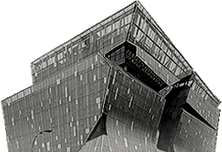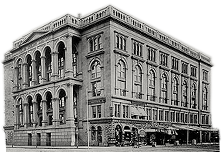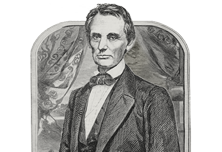Lessons from "Lessons From Modernism"
Thursday, October 2, 2014, 6:30 - 9pm
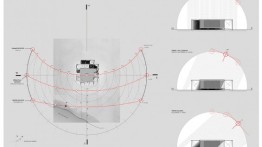
Walker Beach House, plan, Paul Rudolph
Lessons from Lessons From Modernism: Towards a History of Architecture in the Anthropocene
A lecture by Daniel A. Barber
Architects have long had an interest in the relationship of their design interventions to surrounding environmental conditions. As the exhibition Lessons from Modernism demonstrates, with the introduction of modern architectural techniques this relationship was reconfigured. In this lecture, Daniel Barber will argue that the ways in which architects have imagined and represented new conditions for environmental change have been especially significant.
Barber will focus on the diagrams of Victor and Aladar Olgyay, architects and design methodologists teaching at MIT and Princeton in the 1950s. In the Olgyay’s diagrams, the figure of the human is central – literally, drawn in the middle of their images, and conceptually, expressive of the new kinds of living that these architectures could allow. While these expressions were part of the renewed interest in humanism that pervaded architectural discussions in the post-war period, in our current context of anthropogenic climate change they read quite differently. The history of the architectural eco-diagram, in other words, offers a compelling analytic site for reconsidering the condition of humanity amidst rapidly increasing knowledge of the fragility of the global ecological system. The Olgyay’s diagrams simultaneously catalyzed new architectural knowledge – by integrating data and methods from other fields – and also brought into sharp relief the parameters for human existence and for social experience upon which the field of architecture has relied.
Daniel A. Barber is an Assistant Professor of Architecture at the University of Pennsylvania School of Design, where he is also the Associate Chair of the Department of Architecture. He is an architectural historian with a research and teaching interest in the relationship between architecture and the global emergence of environmental culture. He holds advanced degrees from Yale and Columbia Universities, and was recently a post-doctoral fellow at the Harvard University Center for the Environment. Articles have recently appeared in Grey Room, Technology and Culture, and on places.designobserver.org, as well as in numerous edited volumes. His first book, A House in the Sun: Modern Architecture and Solar Energy in the Cold War, will be published by Oxford University Press in the spring of 2015.
Daniel received a PhD in Architecture History and Theory from Columbia University, and a Master of Environmental Design from Yale University. He was recently a post-doctoral research fellow at the Harvard University Center for the Environment and Graduate School of Design, and has held visiting positions at Oberlin College, Barnard College, and the University of Auckland, New Zealand. In February 2015 he will be the Terra Foundation for American Art Visiting Professor at the Courtauld Institute of Art in London.
FREE AND OPEN TO THE PUBLIC
Reception and Lessons from Modernism: Environmental Design Considerations in 20th Century Architecture, 1925 - 1970 book launch to follow on the Alumni Roof Terrace.
Located in the Frederick P. Rose Auditorium, at 41 Cooper Square (on Third Avenue between 6th and 7th Streets)

